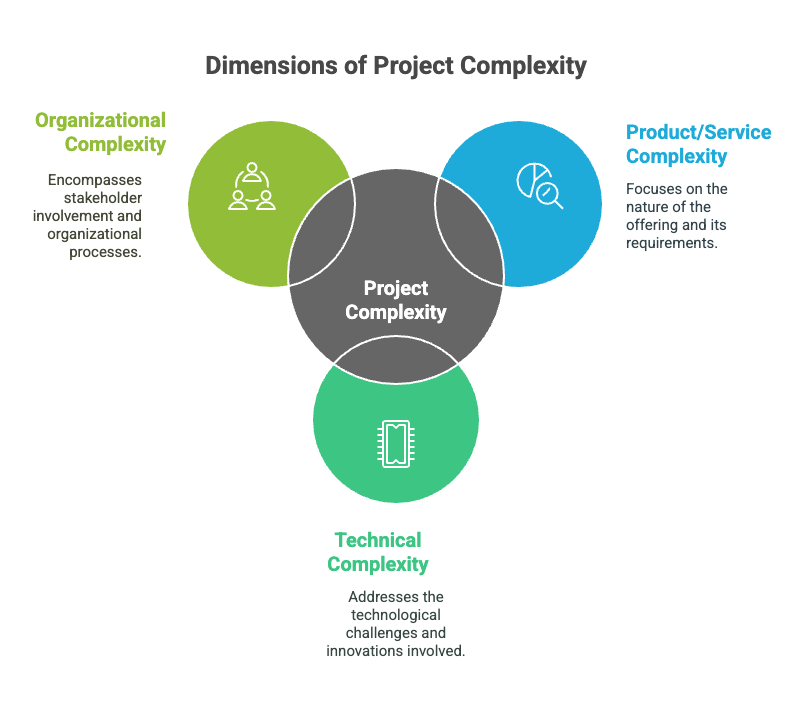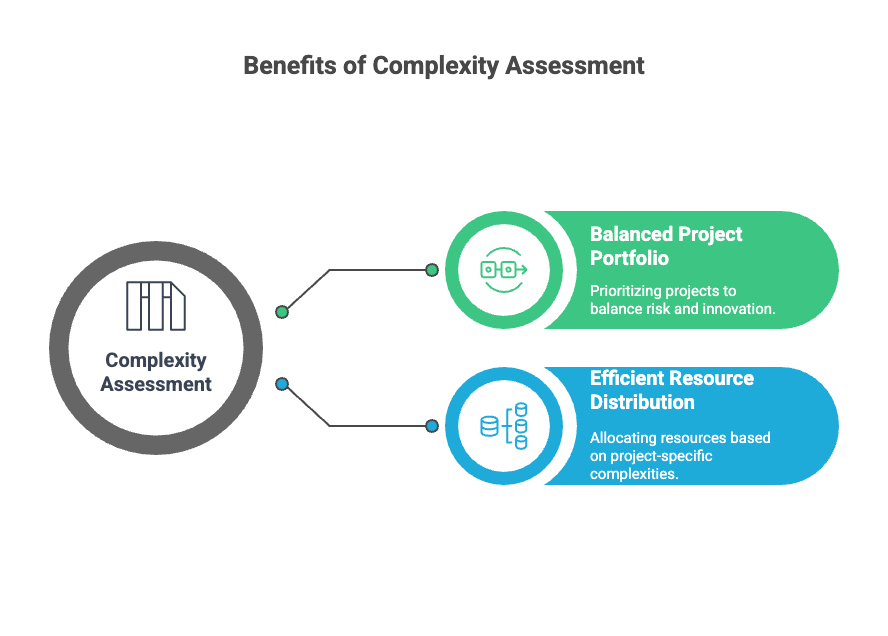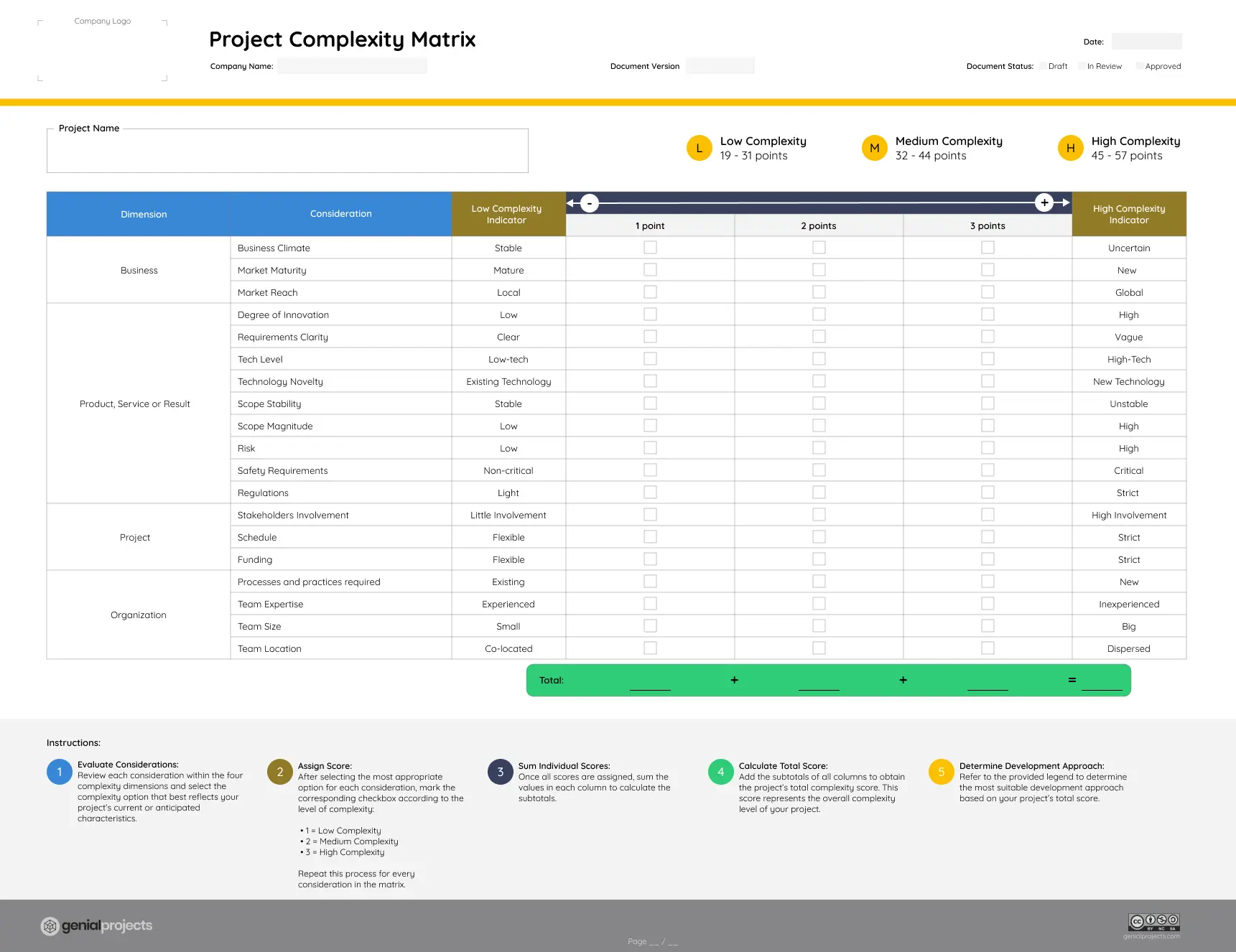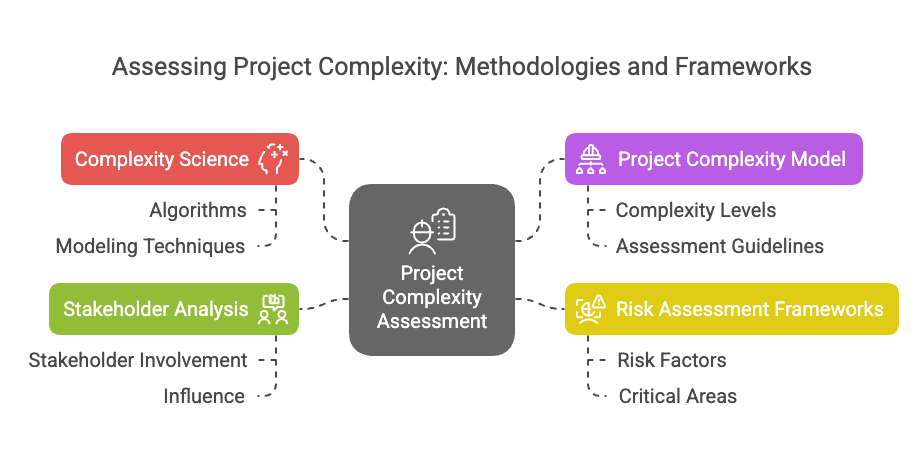In today's fast-paced technological landscape, the successful initiation of projects is paramount for organizations aiming to sustain their competitive edge. Effective management of initiatives requires a thorough understanding of their inherent complexities, which can vary significantly from one initiative to another. A careful assessment of project complexity during the initiation phase not only facilitates optimal resource allocation but also ensures a balanced project portfolio. This article explores the concept of project complexity, highlights its critical role in the early stages of initiative planning, and introduces the Genialprojects Complexity Matrix—an innovative tool designed to streamline complexity assessment for better decision-making.
What is Project Complexity?
Project complexity refers to the multitude of factors that can influence the execution and outcome of an initiative. This complexity can arise from various dimensions, including the product or service being developed, technical requirements, organizational structure, and the external business environment. Understanding these dimensions is crucial for comprehending the intricacies associated with each endeavor.
The dimensions of complexity can be broadly categorized into three areas:
Product/Service/Result Complexity: This involves the nature of the offering itself, including the degree of innovation involved, the clarity of requirements, and the scope stability.
Technical Complexity: This dimension includes the technological challenges associated with the initiative, such as the level of innovation, technology novelty, and any applicable safety regulations.
Organizational and Business Environment Complexity: This includes factors such as stakeholder involvement, team expertise, market maturity, and the organizational processes required to execute the initiative efficiently.
Recognizing these dimensions helps project leaders anticipate challenges and develop effective strategies to tackle potential hurdles, ultimately increasing the likelihood of project success.

The Importance of Complexity Assessment During Project Initiation
Assessing complexity at the outset is not merely a formality; it is a strategic necessity. Understanding the complexities involved in an initiative allows for more informed decision-making during the planning phase. Early complexity evaluation serves as a foundation for establishing realistic timelines, setting budgets, and allocating resources effectively.
When organizations conduct complexity assessments prior to project initiation, they gain insights that inform not only the methodology and approach to be employed but also the level of stakeholder engagement required. By addressing complexities early on, project teams can navigate potential pitfalls, align stakeholder expectations, and prepare for the unique challenges posed by each initiative.
Benefits of Complexity Assessment
A thorough complexity assessment offers a multitude of advantages. Foremost, it aids in the creation of a balanced project portfolio. By understanding the complexities associated with each initiative, organizations can prioritize projects based on risk, resource availability, and alignment with strategic goals. This ensures that a diverse range of initiatives is pursued, promoting innovation while managing potential risks.
Another significant benefit lies in the efficient distribution of organizational resources. A comprehensive complexity assessment enables project managers to allocate talent, technology, and budgetary resources to initiatives based on their specific needs and intricacies. This tailored approach not only maximizes resource utilization but also enhances the overall quality and success rate of the projects undertaken.

How to Assess Project Complexity
There are several established methodologies and frameworks available for assessing project complexity. These often include:
Complexity Science: This approach leverages algorithms and modeling techniques to evaluate the interactions within a project’s environment, allowing for a holistic perspective on complexity.
The Project Complexity Model: This model categorizes projects based on their complexity levels and provides guidelines for assessment.
Risk Assessment Frameworks: These frameworks evaluate risk factors that contribute to overall complexity, helping to pinpoint critical areas that require attention.
Stakeholder Analysis: By examining stakeholder involvement and influence, organizations can gain insights into complexity stemming from relationships and communications.
By employing these methodologies, project leaders can gather valuable data that inform their planning processes and guide their strategic decisions.
Introducing Genialprojects Complexity Matrix
At Genialprojects, we recognize the need for a streamlined approach to complexity assessment during the initiation stage. Thus, we developed the Genialprojects Complexity Matrix. This matrix serves as a comprehensive tool to evaluate and quantify project complexity quickly.
Purpose
The purpose of the Genialprojects Complexity Matrix is to facilitate rapid complexity assessment, enabling teams to identify the nature of the projects they are initiating. By providing a standardized framework, it allows organizations to gauge complexities with precision and speed.
Key Components
Our model groups considerations for assessing complexity into four main dimensions:
Business Environment: Factors such as business climate, market maturity, and market reach.
Product, Service, or Result: Includes aspects like degree of innovation, requirements clarity, technological level, and scope stability.
Project: Encompasses stakeholder involvement, scheduling, funding, and organizational structure.
Organization: Involves processes and practices required, as well as team expertise, size, and location.
How to use Genialprojects Complexity Matrix
The matrix allows for scoring options for each consideration on a scale from 1 (low complexity) to 3 (high complexity). Users calculate a total score by summing the scores from each selected consideration. This total score aids in determining the appropriate development approach based on a predetermined scale, ensuring that project strategies align with assessed complexities.

Free Project Complexity Matrix
Plantilla de Matriz de Complejidad de Proyectos gratis
Challenges in Implementing Complexity Assessment
While the Genialprojects Complexity Matrix offers a structured method for assessing complexity, organizations may encounter challenges in its implementation. Different organizations may possess unique considerations, dimensions, and scales that require adaptation of the matrix to fit specific needs.
Additionally, a thorough analysis could necessitate a weighted approach to give greater prominence to certain dimensions over others.
To address these challenges, organizations should be prepared to customize the Genialprojects Complexity Matrix to reflect their specific operational realities. Engaging a diverse group of stakeholders during the configuration process can also enhance the relevance and applicability of the assessment. Furthermore, training sessions on complexity assessment can equip team members with the necessary skills to navigate the challenges effectively.
Key Takeaways
In conclusion, assessing complexity in the project initiation phase is a critical component of successful initiative management. It empowers organizations to create a balanced project portfolio, ensuring that resources are allocated judiciously. The Genialprojects Complexity Matrix serves as an invaluable tool for organizations seeking to enhance their complexity assessment capabilities.
By prioritizing proactive complexity management, organizations can not only improve project outcomes but also foster a culture of innovation and adaptability. In a world where change is the only constant, understanding and managing complexity can spell the difference between project success and failure.
